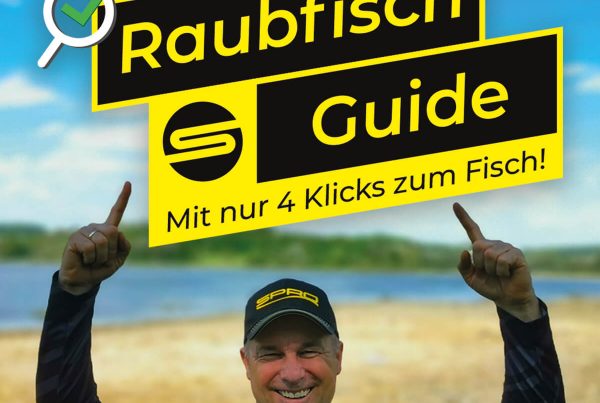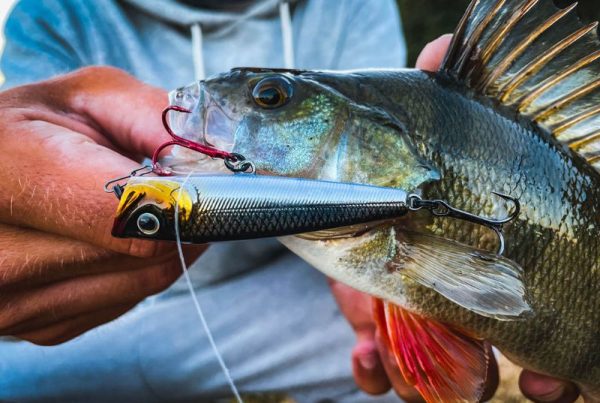The introduction to "deadbaiting" - fishing with dead baitfish
One of the most effective methods of targeted pike fishing, apart from spinning with artificial lures, is fishing with dead bait fish - especially in the cold season. Many anglers imagine deadbaiting, as it is also known today, to be rather boring. Of course, you fish much longer and more intensively at promising spots with baitfish than most spin fishermen would do with their artificial lures. Nevertheless, there is always the opportunity to "make distance" when deadbaiting. It makes sense - after all, the fish at a single spot don't usually bite all day. However, those who limit themselves to the essentials when choosing equipment for deadbaiting are also mobile on the water.
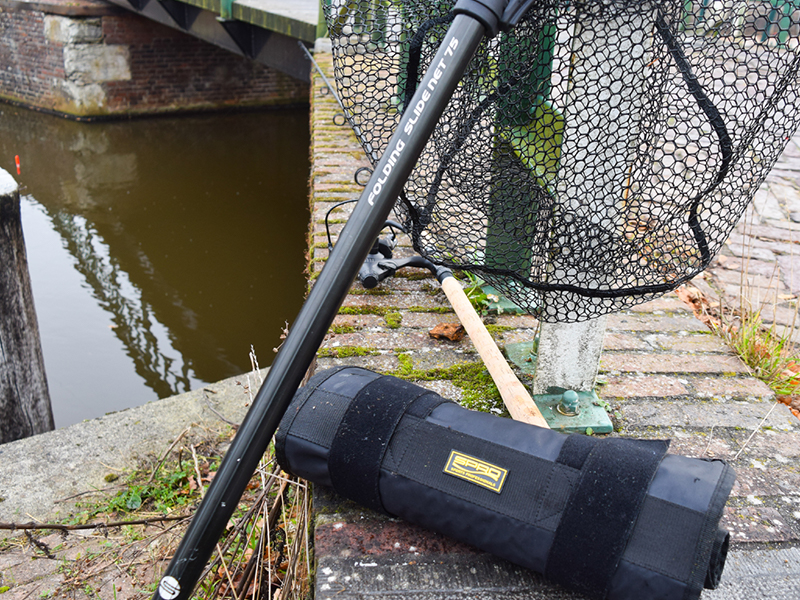
If you limit yourself to the few parts required, you can also "make distance" when deadbaiting.
Spots
If you want to be flexible on the water and change spots from time to time, you should consider this in advance when choosing your spot. Smaller canals, polders and rivers offer the best opportunities here, as there are often many hotspots within a few kilometers. Locks, weirs, bridges, jetties and piers that influence the current or corners where forage fish and washed-up flotsam (and often dead fish) gather are promising fishing spots.
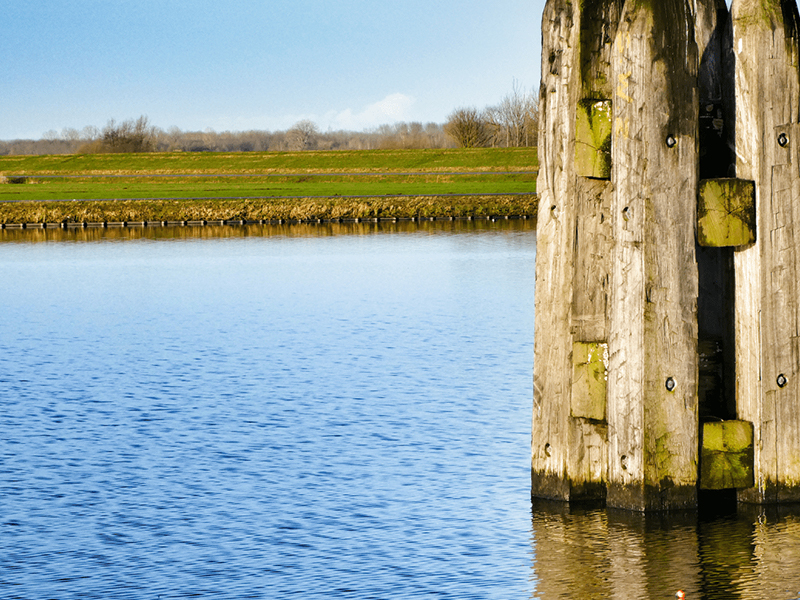
Pillars like this are a promising fishing spot. The bait should be placed as close as possible to the obstacle.
Bait fish
When fishing with dead baitfish, the choice of bait is a much-discussed matter. Ideally, you should catch your own baitfish. For example, when they are biting well in the warm months. Roach, bream and bleak are easy to freeze so that you also have bait ready in winter. It is even better if you use fresh bait from the water in question. This prevents the transmission of diseases from fish in other waters.
For the winter, however, bait from completely different waters is a good choice on the water: sea fish. Mackerel, smelt and herring are available at almost any market or supermarket for little money - not to mention even cheaper, which is how they should be. Past experience shows that pike often weaken at the sight of sea fish. In addition to the much stronger smell of sea fish, which is optimally distributed in the water with a slight current, sea fish are exactly the right source of fat for the upcoming winter.
When it comes to the size of the bait fish, hand-length specimens have proven their worth. Those who fish with smaller or halved baitfish tend to catch smaller pike on average. Those who go for whole mackerel can be rewarded with capital pike for their size mania, but must also expect to catch no fish. The middle way is often a good choice here.
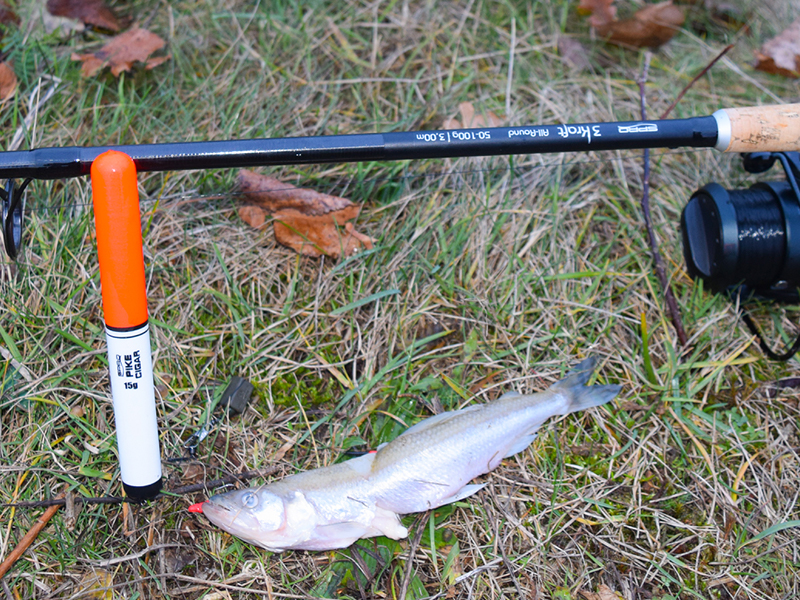
This stint has already survived several attacks on this day. The fact that it is torn open at the belly is not a problem. This gives it even more flavor. It is important that the hooks hold in the bait and that the fish survives the cast.
Rod
Simple carp rods up to 3lbs or ground rods and stalking rods with a casting weight of between 50 and 100g are suitable for getting started with deadbaiting. Rods with a length of 3 to 3.60m are ideal for placing rods on rock piles and steep banks and for safely drilling fish on obstacles. It is important that the rod has a semi-parabolic action and large rod guides. The advantage of large rod rings when fishing with running poles is that the float can be set extremely low with the rubber stopper and the stopper can simply slide through the rings when cranking in. In the depths of winter, large rings also don't freeze up so quickly.
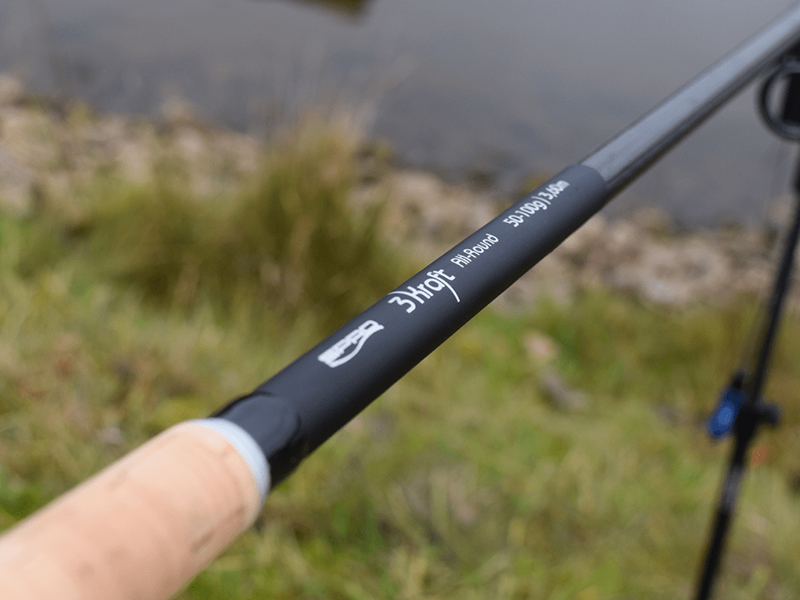
Rods with cork handles are real classics when fishing with baitfish. This model covers all areas of deadbaiting for pike.
Role
Opinions differ when it comes to choosing a fixed spool reel. While some swear by free spool reels, others opt for simple 4000 size fixed spool reels. The advantage of a free spool reel is that the baitfish can simply be placed on the bottom and the rod can be placed in a bite indicator, as is also common when carp fishing. If you don't have a free spool reel, you can also simply fish with the reel brake wide open. It is important that this is set firmly again before you set the hook for a bite. Otherwise the fish will hook poorly or, in the worst case, not hook at all.
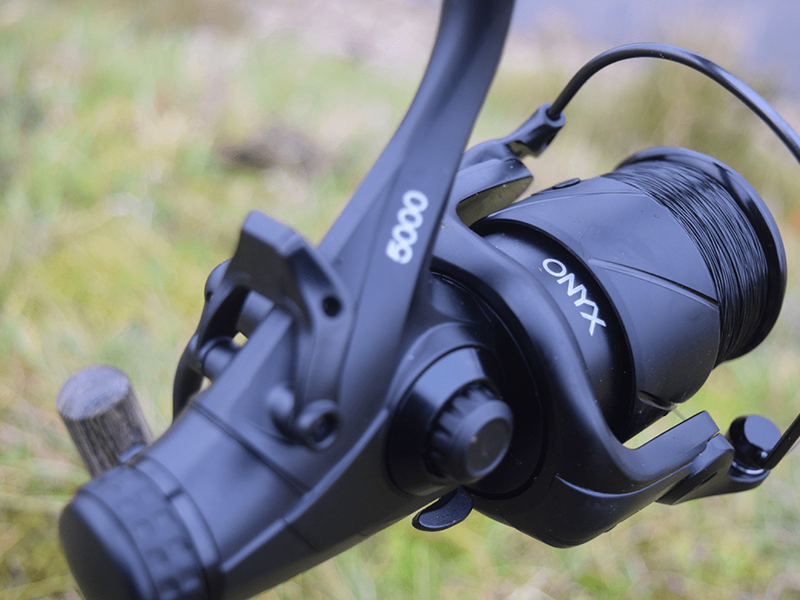
Whether you opt for a free spool reel depends on your personal preferences. If you want to switch between bottom and float fishing, it is much easier with a free spool reel.
Cord
In contrast to spinning fishing, monofilament lines in 0.32-0.38 strength are used for deadbaiting. In addition to stretching the line during the strike and during the fight, one of the advantages of monofilament in winter is that, unlike braided line, it does not soak up water and cannot freeze - at least not to the extent that it breaks. The line should also be particularly abrasion-resistant, as when fishing with baitfish you are often fishing near obstacles and the line can come into contact with one or other pillar.
Techniques and accessories
If you want to place your baitfish directly on the bottom without a float, all you need is a ground lead, a rubber stopper or a rubber bead to protect the knot, a carabiner swivel and a baitfish leader with two treble hooks. In this case, electronic bite indicators with a swinger are suitable for detecting a bite. If the swinger falls down after the bite, the fish swims in our direction. If the swinger is pulled upwards, the pike moves in the other direction with its prey.
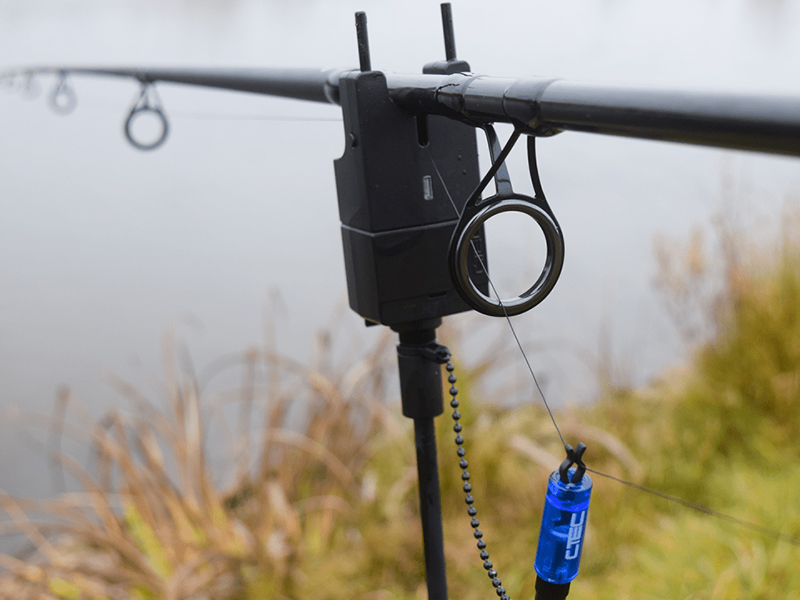
A simple bite indicator with a swinger is completely sufficient as a bite indicator for bottom fishing.
For float fishing, running poles have proven their worth, as they can also be set particularly deep by adjusting the rubber stopper. Cigar floats are among the most popular models for beginners. If you have heavy floats up to 20g in your box, you have the advantage of being able to offer small baitfish in open water without the float being submerged by the weight of the bait.
Personally, I also use a heavy float on the bottom for my bait fish in winter. For balancing the float, the usual small lead from the peaceful fish sector is of course not enough, which is why I use special lead to lead out a pike float of the desired weight.
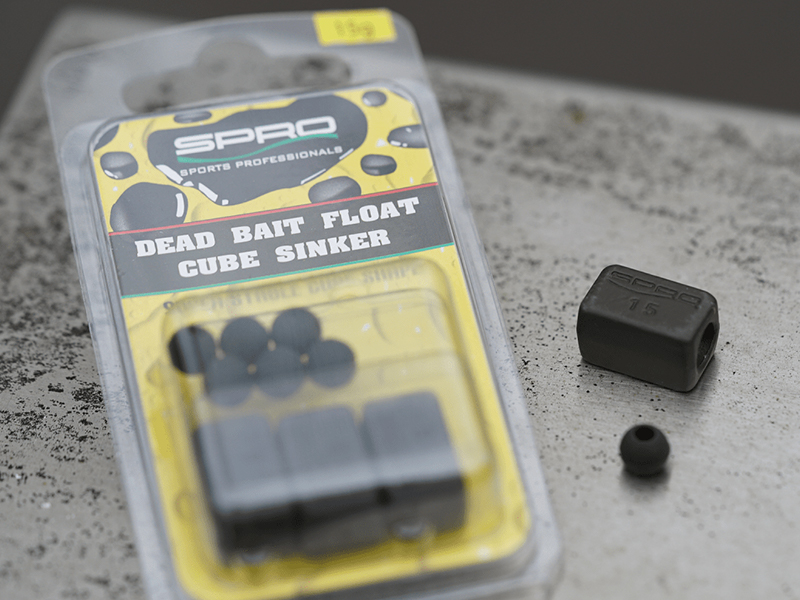
In addition to the lead in the desired weight, lead sets like these also contain beads to protect the knot.
The correct distance between float and lead can be easily determined by the rubber stopper. If you push the stopper down towards the swivel and the float sinks after casting, the float is set "too shallow". If you move the stopper upwards and the float lies sideways on the water, the float is set "too deep". Before actually fishing, it is therefore important to find the perfect setting. Alternatively, you can simply place the baitfish on the bottom as described above.
When deadbaiting with a float, the bite is often different to when float fishing for peaceful fish. The float doesn't just sink, it moves back and forth through the water. Some pike first "play" with their prey before they really want to eat the baitfish. When the float is pulled energetically in one direction, a powerful strike should be made. When fishing for pike with baitfish, it is important not to strike too early, but also never too late, so that the fish cannot swallow the bait too deeply. Relatively small treble hooks in sizes 4-5 are ideal for hooking pike safely and being able to release the rig easily later.
The steel leader should be at least 60 cm long so that the pike cannot get close to the main line with its teeth after a bite. Whether you opt for 1×7 or 7×7 steel is a matter of taste. I prefer the simple and inexpensive 1×7 material.
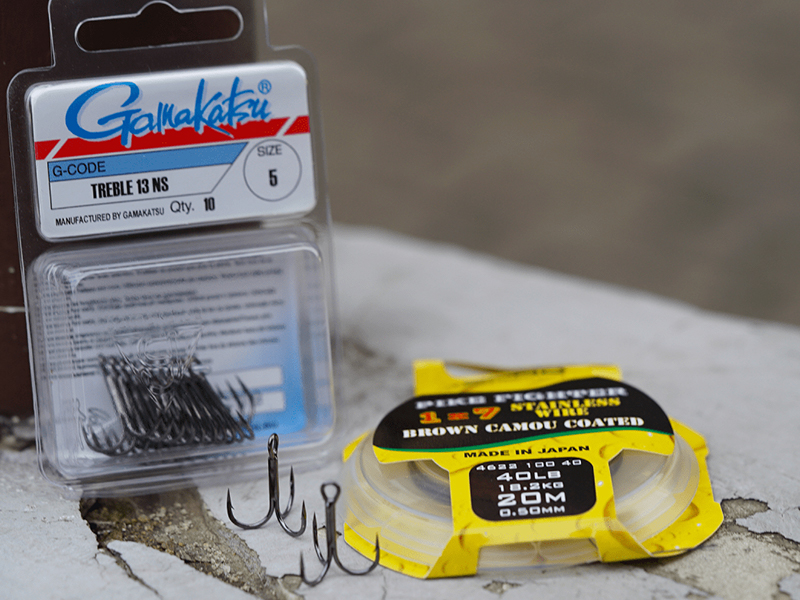
Only high-quality parts are suitable for building your own leader.
In addition to a large and roomy landing net, an unhooking mat and long pliers are an advantage. It is also a good idea to have various tied pike leaders in stock on the water. It is important that the distance between the two treble hooks is different so that you can experiment with baitfish of different lengths.
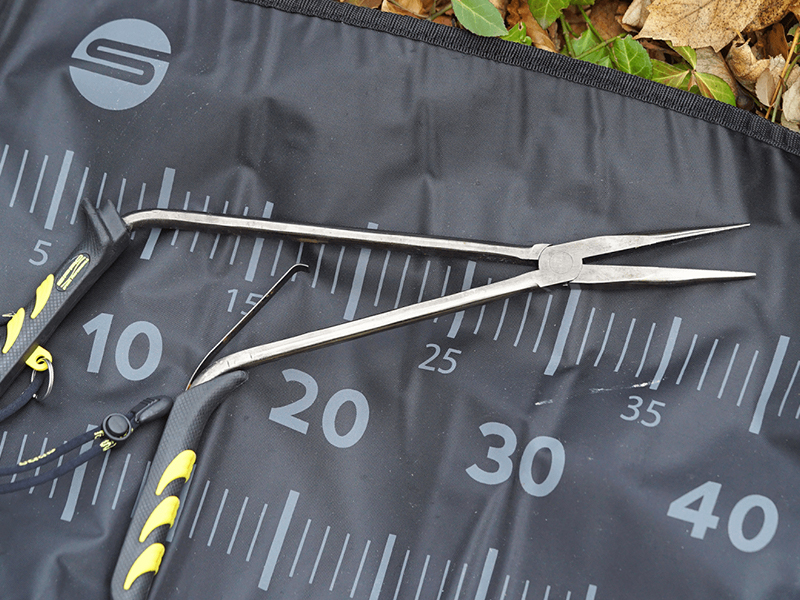
Important accessories for pike fishing - whether spinning or deadbaiting: an unhooking mat and long release pliers.
When fishing for pike with baitfish, the bait should be baited so that the hook tips point from the head towards the tail. Most pike eat their prey head first and are better hooked this way.
Try it out, fishing with dead baitfish is more mobile and action-packed than many people think. The dancing of a float is also a magical sight when pike fishing. And when the first pike lies on the unhooking mat, even the last preconceptions about fishing with dead baitfish fade away.
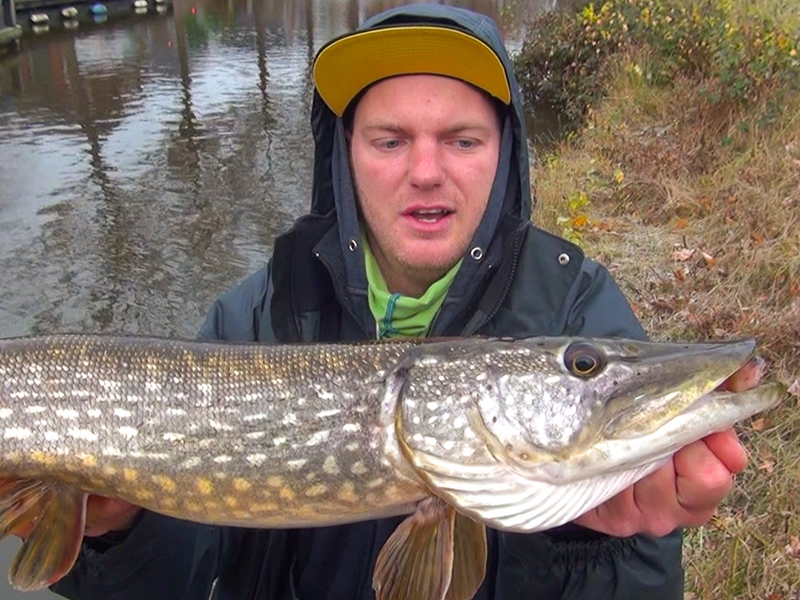
It's okay to look a little puzzled. This pike bit only 5 minutes after the baitfish was put out.
Your SPRO Team



